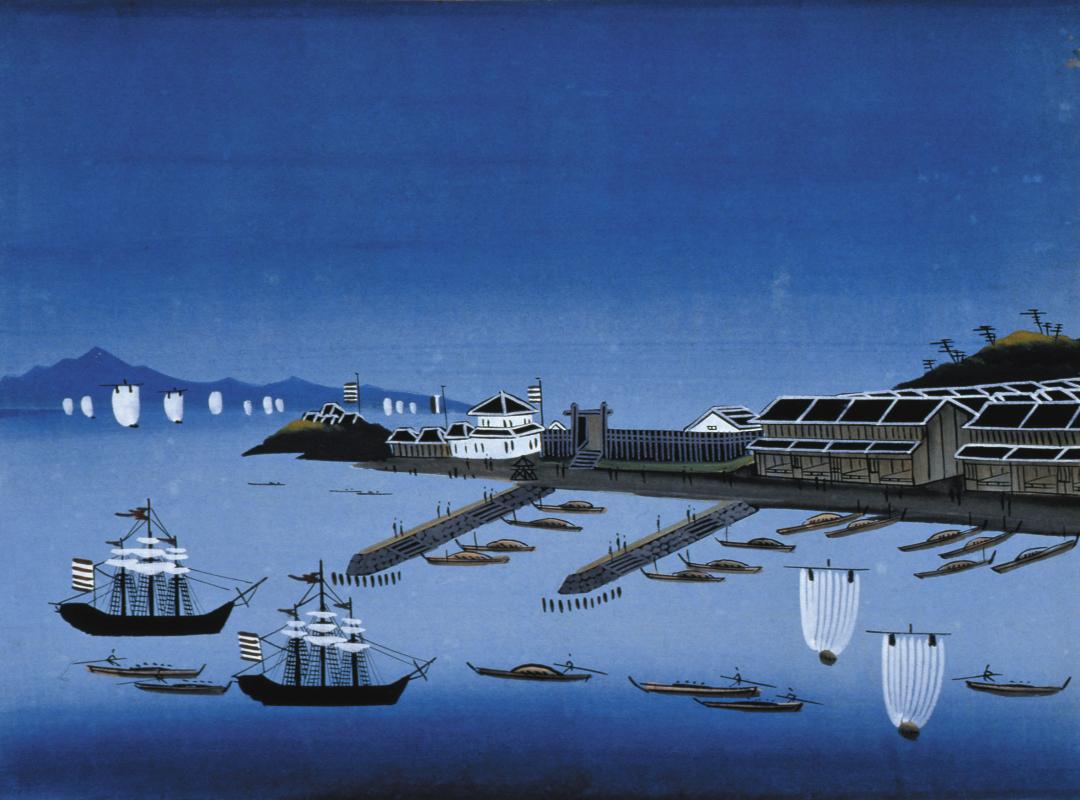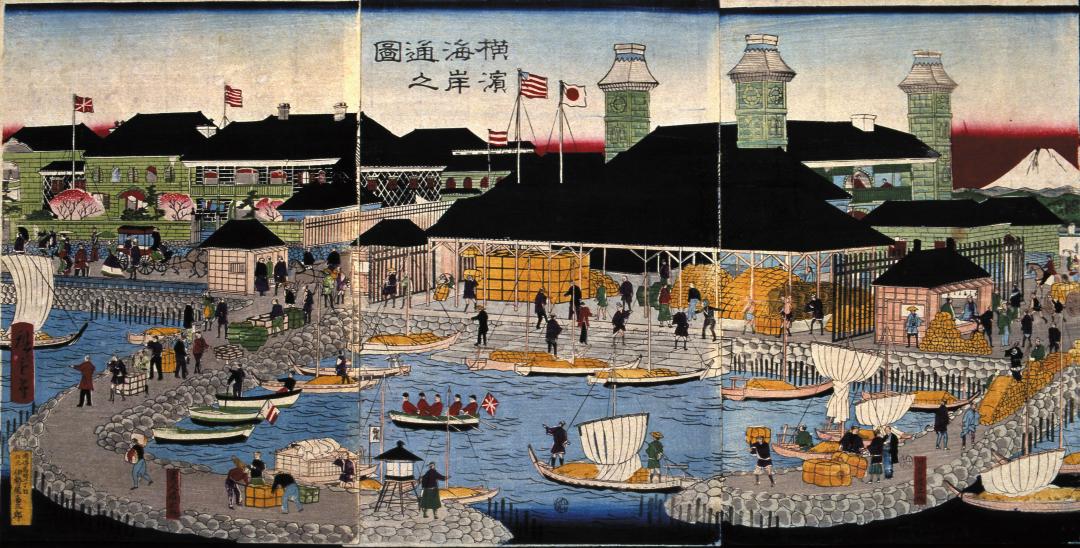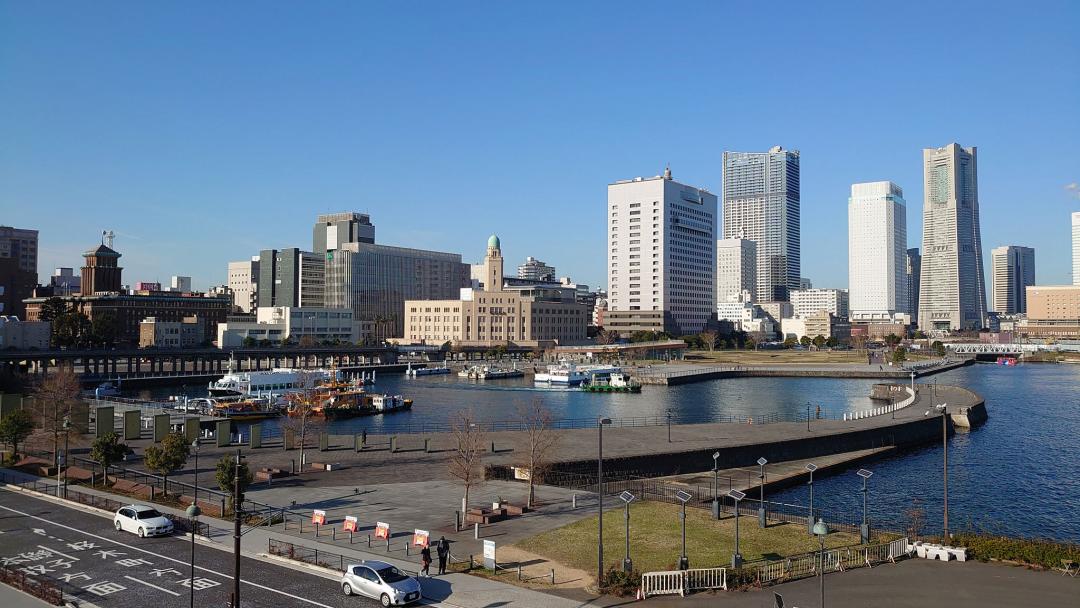Want to know more? Dig a little deeper by reading the information below.
Zou-no-hana: The Birthplace of Yokohama Port
With the opening of the port in 1859, Yokohama was transformed. What had once been a rural village with approximately 100 households of farmers and fishermen became an international trading hub. Foreign products, foreign technologies, and foreigners themselves spilled into the city through the newly opened port, triggering widespread social, political, and economic changes. All of it began here, in the Zou-no-hana district.
In 1858, Japan signed treaties with several Western powers, granting them residential and trading rights at a number of ports, including a soon-to-be constructed port in Kanagawa Prefecture. The port, which was built in Yokohama, opened on June 2, 1859, and it immediately received a flood of foreign ships bearing goods and entrepreneurs. The government had established a sequestered settlement area for the arriving Westerners, and the division between foreign and domestic extended even to the wharf, which had two identical piers: the eastern pier received international goods and passengers, and the western one was used by Japanese travelers and merchants. On the shore between them stood a customs office, which handled taxes on arriving goods.

First iteration of the Zou-no-hana Wharf
(Image courtesy of Yokohama Port Museum)
In order to open the port as soon as possible, the two piers were built quickly. They were small even for the time, at approximately 109 meters by 18 meters. As a result, only the smallest ships could dock at them, and most foreign ships had to moor farther out in the bay and wait as small barges called hashike carried their goods to the pier. To make matters worse, both piers were completely exposed to strong winds that blew from the north and northeast, causing dangerously high waves. Visiting Westerners lodged complaints about these issues, and after the Great Keiō Fire destroyed a third of the pier in 1866, a pair of British civil engineers were hired to redesign and rebuild the wharf. Per their design, the eastern pier was lengthened and curved to act as a breakwater. This new shape is the origin of the nickname “Zou-no-hana,” meaning “Elephant’s Trunk.”

Yokohama kaigan dōri no zu (1870)
(Image courtesy of Yokohama Port Museum)
Beginning in the 1880s, Yokohama became Japan’s leading port for the export of tea and raw silk thread. As the export industry continued to grow during the early twentieth century, so did the port, and it was repeatedly expanded to receive larger ships in greater numbers. Zou-no-hana’s eastern pier was expanded into Tetsusanbashi Pier in 1894, and again into Ōsanbashi Pier in 1925, but the characteristic “trunk” remained.
In 2009, the city transformed this 4-hectare waterfront area into Zou-no-hana Park to mark the 150-year anniversary of the opening of Yokohama Port. The stone retaining walls that supported the eponymous “Elephant’s Trunk” pier were restored to their late-nineteenth-century appearance, and the construction work also uncovered other historical foundations and fixtures that are now visible throughout the park.

View of Zou-no-hana Wharf from Zou-no-hana Park
 Find and scan all the QRT codes!
Find and scan all the QRT codes!
(7different codes across 12 locations)

 A History of Yokohama Port
A History of Yokohama Port
 Zou-no-hana: The Birthplace of Yokohama Port
Zou-no-hana: The Birthplace of Yokohama Port

 Red Brick Warehouses: A Symbol of the Evolving Port
Red Brick Warehouses: A Symbol of the Evolving Port
 Shinkō Pier and the Hammerhead
Shinkō Pier and the Hammerhead

 Kishamichi Promenade
Kishamichi Promenade
 A Designer Cityscape: The Minato Mirai 21 Project
A Designer Cityscape: The Minato Mirai 21 Project
 The Ship That Trained a Half-Century of Sailors
The Ship That Trained a Half-Century of Sailors

 A History of Yokohama Port
A History of Yokohama Port
Click here for more information on the Port History Guide and other tourist information.
Cruise Project Promotion Division, Port and Harbor Bureau, City of Yokohama
Tel:045-671-7272
